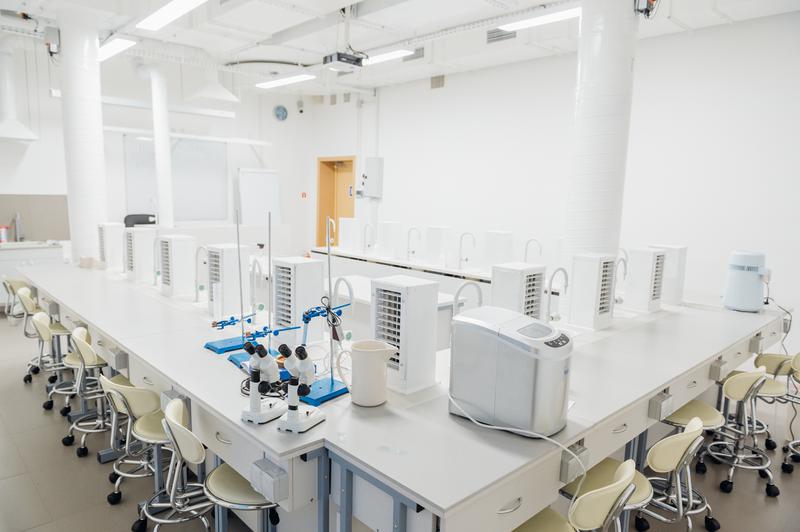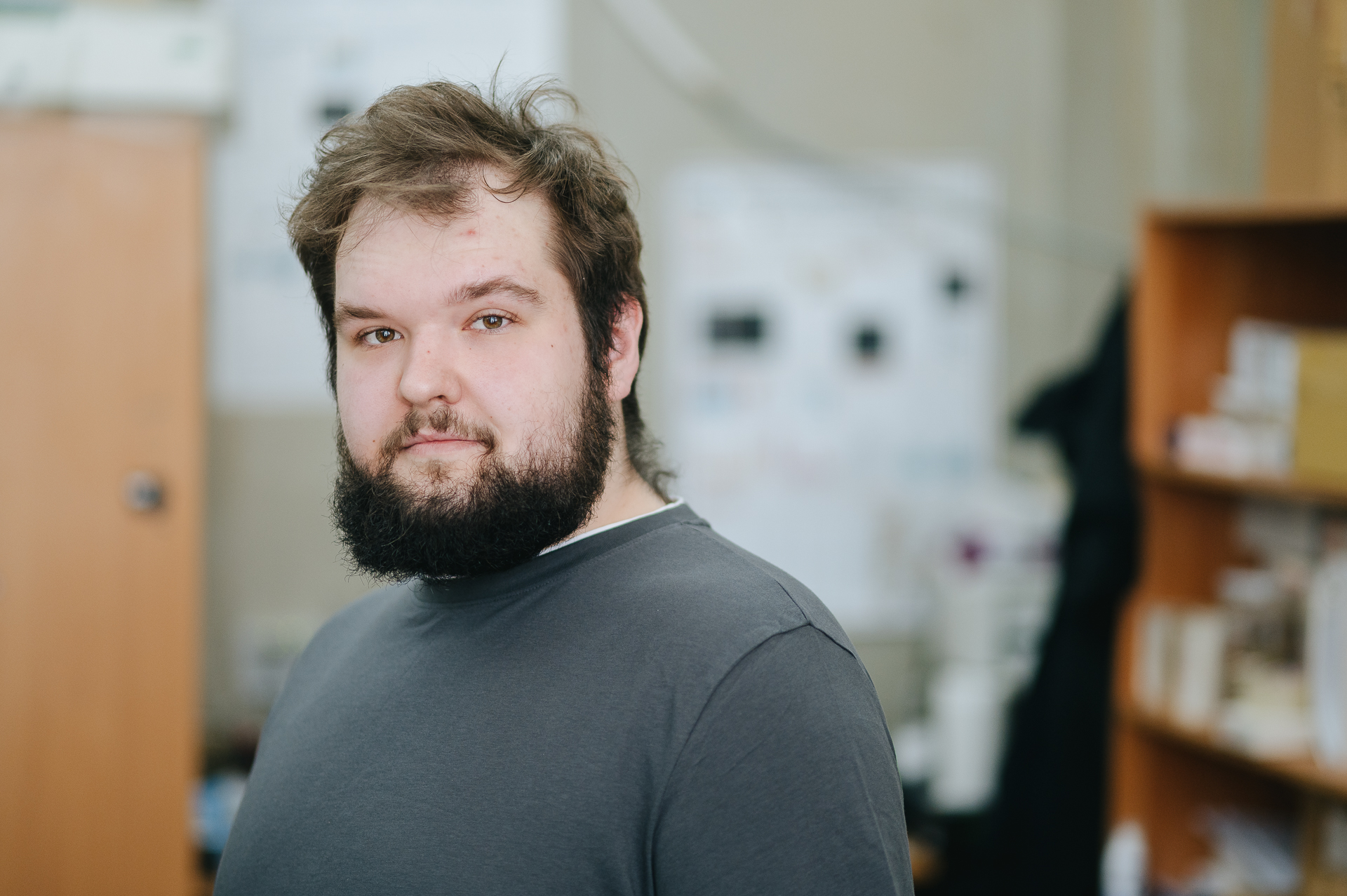Russian Scientists Improve Water Purification Membranes Using Metal Ions

Researchers have proposed using polymer membranes modified with copper, zinc, and chromium metal ions for water purification. These polymers were used for the first time in water purification via electrodialysis. Copper-based membranes demonstrated record selectivity for monovalent ions, opening new possibilities for sustainable water recycling. The study has been published in the Journal of Membrane Science.
Electrodialysis is a water purification method that removes contaminants without chemical reagents by moving ions through a membrane under an electric field. The efficiency of purification depends on the membrane’s properties, particularly its selectivity—the ability to allow certain ions to pass while blocking others. Polymer membranes typically allow multivalent ions, such as sulphates, to pass through more easily than monovalent ions like nitrates. This results in precipitate forming on the membrane surface, which block ion transfer and can lead to system failure. Therefore, scientists are developing ways to enhance membrane selectivity for monovalent ion transport.
Electrodialysis membranes are usually made of polymers containing channels with charged walls that selectively permit ions to pass. A conventional polymer consists of a chain of carbon atoms with charged functional groups attached via strong covalent bonds. These groups are part of the polymer’s structure because they are fixed to its side chain.
HSE scientists have demonstrated how a simple modification can enhance the selectivity of polymer membranes. They used polybenzimidazole (PBI)-based membranes embedded with metal ions—copper, zinc, and chromium. In this structure, metals bonded with nitrogen atoms from the polymer through coordination bonds, which are easier to form and break compared to strong covalent bonds. This property allows the material’s structure to be modified and adapted for specific applications.

‘A typical polymer can be imagined as a string of lights, where the main chain is the wire and the functional groups are bulbs attached to it. In regular membranes, the bulbs remain fixed in place, whereas in our case, they appear to levitate. We can adjust their number by adding more or fewer metal ions during synthesis, thus regulating the membrane’s properties,’ explains study author Andrey Manin, a master's student in the Chemistry of Molecular Systems and Materials programme at the HSE Faculty of Chemistry and a researcher at the Kurnakov Institute of General and Inorganic Chemistry of the Russian Academy of Sciences (IGIC RAS).
Copper-ion-enhanced membranes demonstrated record-breaking selectivity in separating nitrates from sulphates. Scientists suggest two possible explanations. Firstly, the ion channel size within the membrane structure is ideally suited for nitrate transport, while larger sulphate ions get trapped. Secondly, nitrate ions may interact with metal ions in the coordination sphere, facilitating their passage through the membrane.
Experiments confirmed that copper-infused membranes are not only effective but also stable, retaining their properties over extended use. This is a significant advantage over zinc-based membranes, where zinc ions leached from the polymer matrix, contaminating water with heavy metals. Scientists are exploring several ways to scale the technology for industrial application.
‘In our experiment, we used substituted polybenzimidazole synthesised by our colleagues at INEOS RAS. However, for industrial production, a more accessible and widely manufactured polymer, such as unsubstituted polybenzimidazole, could be used. Another option is to apply a thin layer of the synthesised polymer with metal ions onto commercially available electrodialysis membranes. This approach would enhance selectivity while maintaining conductivity due to the base material. Since these membranes are already produced using well-established processes, adding one more stage would not significantly impact production costs but could greatly improve membrane efficiency,’ says Andrey Manin.
See also:
Scientists Have Modelled Supercapacitor Operation at Molecular and Ionic Level
HSE scientists used supercomputer simulations to study the behaviour of ions and water molecules inside the nanopores of a supercapacitor. The results showed that even a very small amount of water alters the charge distribution inside the nanopores and influences the device’s energy storage capacity. This approach makes it possible to predict how supercapacitors behave under different electrolyte compositions and humidity conditions. The paper has been published in Electrochimica Acta. The study was supported by a grant from the Russian Science Foundation (RSF).
Designing an Accurate Reading Skills Test: Why Parallel Texts are Important in Dyslexia Diagnosis
Researchers from the HSE Centre for Language and Brain have developed a tool for accurately assessing reading skills in adults with reading impairments. It can be used, for instance, before and after sessions with a language therapist. The tool includes two texts that differ in content but are equal in complexity: participants were observed to read them at the same speed, make a similar number of errors, and understand the content to the same degree. Such parallel texts will enable more accurate diagnosis of dyslexia and better monitoring of the effectiveness of interventions aimed at addressing it. The paper has been published in Educational Studies.
Internal Clock: How Heart Rate and Emotions Shape Our Perception of Time
Our perception of time depends on heart rate—this is the conclusion reached by neuroscientists at HSE University. In their experiment, volunteers watched short videos designed to evoke specific emotions and estimated each video's duration, while researchers recorded their heart activity using ECG. The study found that the slower a participant's heart rate, the shorter they perceived the video to be—especially when watching unpleasant content. The study has been published in Frontiers in Psychology.
Scientists Identify Personality Traits That Help Schoolchildren Succeed Academically
Economists from HSE University and the Southern Federal University have found that personality traits such as conscientiousness and open-mindedness help schoolchildren improve their academic performance. The study, conducted across seven countries, was the first large-scale international analysis of the impact of character traits on the academic achievement of 10 and 15-year-olds. The findings have been published in the International Journal of Educational Research.
HSE Scientists Reveal How Disrupted Brain Connectivity Affects Cognitive and Social Behaviour in Children with Autism
An international team of scientists, including researchers from the HSE Centre for Language and Brain, has for the first time studied the connectivity between the brain's sensorimotor and cognitive control networks in children with autism. Using fMRI data, the researchers found that connections within the cognitive control network (responsible for attention and inhibitory control) are weakened, while connections between this network and the sensorimotor network (responsible for movement and sensory processing) are, by contrast, excessively strong. These features manifest as difficulties in social interaction and behavioural regulation in children. The study has been published in Brain Imaging and Behavior.
Similar Comprehension, Different Reading: How Native Language Affects Reading in English as a Second Language
Researchers from the MECO international project, including experts from the HSE Centre for Language and Brain, have developed a tool for analysing data on English text reading by native speakers of more than 19 languages. In a large-scale experiment involving over 1,200 people, researchers recorded participants’ eye movements as they silently read the same English texts and then assessed their level of comprehension. The results showed that even when comprehension levels were the same, the reading process—such as gaze fixations, rereading, and word skipping—varied depending on the reader's native language and their English proficiency. The study has been published in Studies in Second Language Acquisition.
Mortgage and Demography: HSE Scientists Reveal How Mortgage Debt Shapes Family Priorities
Having a mortgage increases the likelihood that a Russian family will plan to have a child within the next three years by 39 percentage points. This is the conclusion of a study by Prof. Elena Vakulenko and doctoral student Rufina Evgrafova from the HSE Faculty of Economic Sciences. The authors emphasise that this effect is most pronounced among women, people under 36, and those without children. The study findings have been published in Voprosy Ekonomiki.
Scientists Discover How Correlated Disorder Boosts Superconductivity
Superconductivity is a unique state of matter in which electric current flows without any energy loss. In materials with defects, it typically emerges at very low temperatures and develops in several stages. An international team of scientists, including physicists from HSE MIEM, has demonstrated that when defects within a material are arranged in a specific pattern rather than randomly, superconductivity can occur at a higher temperature and extend throughout the entire material. This discovery could help develop superconductors that operate without the need for extreme cooling. The study has been published in Physical Review B.
Scientists Develop New Method to Detect Motor Disorders Using 3D Objects
Researchers at HSE University have developed a new methodological approach to studying motor planning and execution. By using 3D-printed objects and an infrared tracking system, they demonstrated that the brain initiates the planning process even before movement begins. This approach may eventually aid in the assessment and treatment of patients with neurodegenerative diseases such as Parkinson’s. The paper has been published in Frontiers in Human Neuroscience.
Civic Identity Helps Russians Maintain Mental Health During Sanctions
Researchers at HSE University have found that identifying with one’s country can support psychological coping during difficult times, particularly when individuals reframe the situation or draw on spiritual and cultural values. Reframing in particular can help alleviate symptoms of depression. The study has been published in Journal of Community Psychology.


